
There has been a close connection between war and human knowledge throughout the history of mankind. Until recently, this has rarely been questioned. War has been endemic in human history and fighting has long been considered an absolute social necessity and often an accepted economic means.
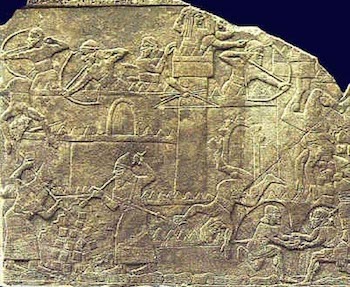
It was both a duty and a privilege of citizens to fight for their community at the best of their ability. Epic poetry and celebratory sculptures glorify war in many human cultures.
In mythology and old saga, the invention of new weapons was attributed to the gods themselves, underlining the high regard that weapon-making had in ancient human societies.Scientists have a social obligation to develop weapons. When warriors are considered the leaders of a community and war-fighting is seen a basic societal need, scientists unavoidably must be ready to work for enhancing their society’s military strength. Often, the development of technology and industry have originated from military necessity.
For the great mathematician Archimedes, any activity aiming at the production of goods was not worth his genius, as he had dedicated his life to pure science.
With some effort, King Heron II of Syracuse had convinced Archimedes to move from theory to practical applications and build defensive and offensive weapons. These proved their effectiveness in the 212 BC defence of Syracuse against the Romans guided by Marcellus, who conquered the city only after an 8 month long siege.

Under the rule of the Ptolemies, during the III and II century BC Alexandria became an important center of scientific research in several fields, including a real school of military technology. The Alexandrian scientists strived for converging theoretical science with actual practical applications.
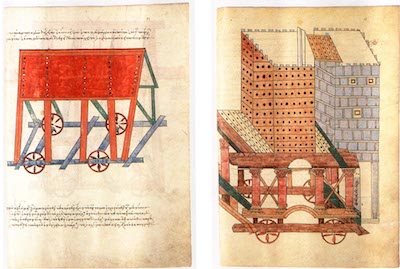
The construction of the ancient Roman empire required centuries of war fighting over the whole Europe, Middle East and North Africa, but no real new technological contribution was introduced by scientists. Developments came from the military environment and by the generals, usually extremely good organizers. Vitruvius (I century B.C.) and Vegetius (VI century A.C.), in their treatises present the Alexandrian war machines, without considering their scientific principles: the authors are mainly interested in the organizational and administrative problems of the armies.
The world of the scholars and the world of the artisans had no point in common during most of the Middle Age both in the Christian and in the Arab civilizations. The progresses in science and in mechanical applications could not cross-fertilize each other.
The situation started to change in the XIII century: scholars as Raimondo Lullo, Robert Grossetestes and Roger Bacon stressed the need of experiments in science and of theoretical foundations in engineering. Villard de Honnecourt, Guido da Vigevano and Conrad Keyser in early XIV century personified the new learned military engineer.
The Italian Renaissance men were at the same time artists and craftsmen, humanists and military figures, geniuses convinced to be able to achieve everything.
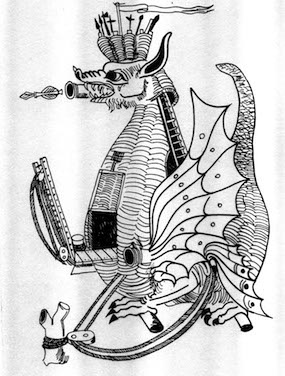
Leonardo da Vinci, in his letter to Ludovico Sforza, ruler of Milan, presents himself not as an artist but as an accomplished engineer, expert in any field of military art. His studies of weapons, fortresses and instruments remain masterpieces of engineering and art.
Galileo, while disclosing the value of mathematics as a tool of scientific reasoning, recognized the need for experimental confirmation of any theory. He was attracted by technical problems and in his visits to the Venetian Arsenal he was involved in naval and military research and development. He also applied his knowledge of geometry and ballistics to military offensive and defensive devices.
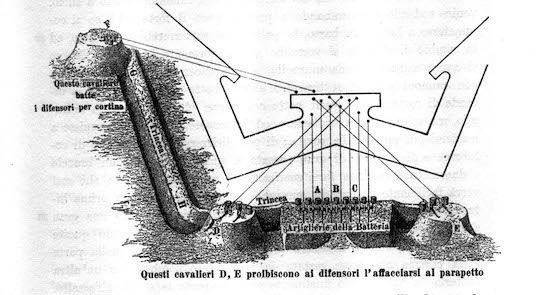
Nautical clocks allowing a reasonable determination of longitudes paved the way to the projection of power of the European countries all across the world and to the creation of colonies in remote regions of the globe.
Christiaan Huygens applied Newtonian mechanics to the construction of a good precision pendulum clock in 1656 for his astronomical research, and in the 1680’s he worked on marine clocks for the Dutch East India Company. The first high accuracy marine clock was produced in England by John Harrison in the 1730’s.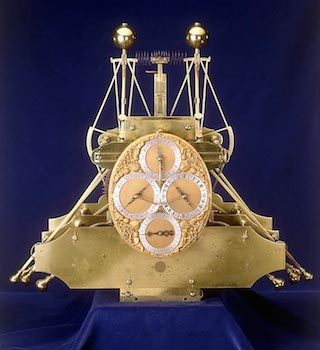
J. Harrison’s H1 marine clock (at the National Maritime Museum, Greenwich, England).
The Longitude problemIn 1714, the British Government offered £20,000 for a solution which could provide longitude to within half-a-degree (2 minutes of time), a task considered impossible. John Harrison (1693-1776) produced a series of better and better clocks and reached the required precision.
The XVIII and XIX centuries witness the creation in several European countries of military schools for training officials of the engineer corps: the first in Turin in 1739, then at Méziéres in France in 1748.
The successes of Napoleon’s Grand’Armée convinced European rulers of the importance of effective technical support for military operations and Prussia (1816), Sweden (1818), and then Russia, Belgium, Spain etc. established technical military schools.Also polytechnic schools in this period were under the control of the military establishment, and the majority of the teachers came from the army, with minimum involvement from of scientists and academics.
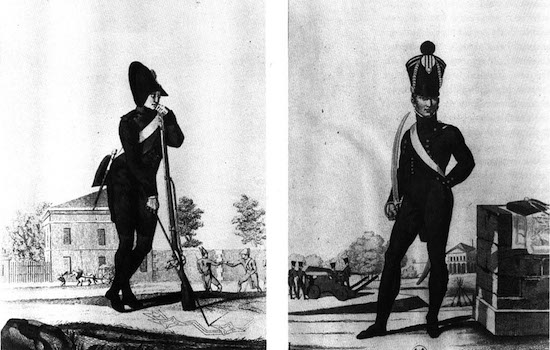
During the XIX century there is a new protagonist in the field of applied research: big industrial companies, with first such instances in the USA and then in Germany.

Chemistry for instance became a critical industrial sector of military relevance. The invention of trinitrotoluene (TNT) in 1863 and of Alfred Nobel’s dynamite in 1867 will have terrible consequences in the coming wars.
The heavy use of explosives on the battlefields of World War I required industry to optimize production and to develop new technologies. In Germany, industrialist Fritz Haber created an organization for chemical war research, enrolling both military and civilian scientists. World War I sees the use of chemical agents on the battlefield – chlorine (1915), mustard gas and phosgene (1917) - causing over 1400000 casualties.The pavilion of the French company Schneider et Cie, at the 1900 Exposition Universelle in Paris. Founded in 1836, it was a major arms manufacturer during the two World Wars, and evolved into Schneider Electric after World War II.
World War I brought many new technological advancements to the battlefield, such as pill boxes, flamethrowers, chemical weapons, air bombing, long-range submarine cruisers etc. However, no new military tactics were developed to make use of this new technology. Soldiers ended up fighting a traditional war, while suffering enormous casualties due to the new technology. The military establishments were conservative and slow to adapt.

On the other hand, for the first time the scientific organizations as such were required to support the military effort and the state took responsibility and control of the scientific research, with the institution of Ministries for research. Since then, science and industry have become more and more accountable to governments, and dependent upon government support.
The image on the left shows young Irene Curie stepping off a radiological vehicle of the French army. During World War I her mother, Maria Skłodowska-Curie, established the first field radiological centres for the military.